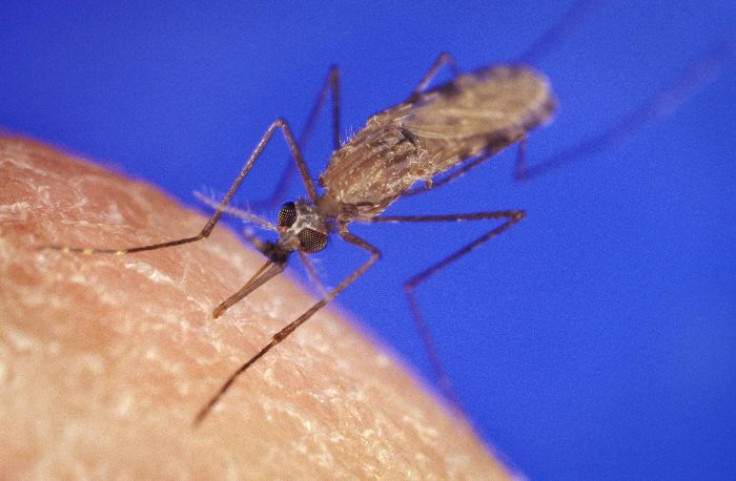Malaria Prevention Could Lie In The Mosquito: Egg Blocking Technique May Reduce Transmission

One species of mosquito, Anopheles gambiae, is responsible for the transmission of malaria and other serious diseases throughout Africa. Researchers of the species have discovered that during sex, a male hormone stimulates egg development in the female. Now, they hypothesize that blocking the hormonal trigger of this ‘switch’ could impair the ability of the species to reproduce.
The researchers believe this discovery might inspire development of new tools for controlling malaria-transmitting mosquito populations.
Malaria: Cause and Symptoms
Malaria, a leading cause of death in tropical and subtropical regions, is caused by a parasite. Plasmodium is transmitted to humans when they are bitten by infected mosquitoes, which themselves become infected after feeding on an infected person. Once inside the body, the parasites multiply in the liver, and from there they infect red blood cells.
Symptoms of the disease usually appear between 10 and 15 days after the mosquito bite and include headache, vomiting, and recurrent attacks of chills and fever. Malaria becomes life-threatening when it begins to disrupt blood supply to organs. Unfortunately, Plasmodia have become immune to many medicines. Each year, malaria kills an estimated one million people worldwide.
Research: Anopheles Gambiae
For the recent study, the researchers, from Harvard School of Public Health and University of Perugia, based their investigation on a foundation of existing knowledge about Anopheles gambiae. For instance, this species is considered ‘highly efficient’ in transmitting the malaria parasite because they almost exclusively feed on human blood while also having a remarkably high reproductive rate.
Understanding this, the researchers began to study the way a steroid hormone called 20-hydroxy-ecdysone (20E) is transferred to a female mosquito during mating. In particular, they observed how it affected the mating-induced stimulator of oogenesis (MISO) protein. An oocyte is an egg, and oogenesis is the creation of an egg cell.
Experimentally, they began to use ‘chemical warfare’ to disturb and suppress MISO's functioning in the female mosquitoes. Doing so reduced egg development. Investigating more deeply, they discovered where MISO and 20E interact — in the female mosquito's reproductive tract — and then identified the pathway of collaboration. In fact, they found the 20E and MISO reaction boosts the buildup of lipids in the ovaries, which in turn leads to a more rapid and higher production of eggs.
Essentially, then, the researchers concluded that egg development in the female may depend on this switch — the MISO protein — being turned on by 20E. Without this ‘mating call,’ she would fail to make eggs.
"This is the first time, in any insect species, that a male hormone has been shown to directly interact with a female protein and alter the ability of the female to reproduce," said co-author Francesco Baldini, a UNIPG graduate student who performed part of the analyses as a visiting scientist at HSPH.
"How males contributed to egg development had been previously unknown; with the identification of the molecular players of this male-female interaction we can now find ways to switch off the signal and prevent females from reproducing," Flaminia Catteruccia, one of the study's authors, stated in a press release.
All are hopeful their work will someday be transformed into a new strategy of mosquito control and therefore malaria prevention.
Source: Baldini F, Gabrieli P, Smith A, et al. The interaction between a sexually transferred steroid hormone and a female protein regulates oogenesis in the malaria mosquito Anopheles gambiae. PLoS Biology. 2013.



























